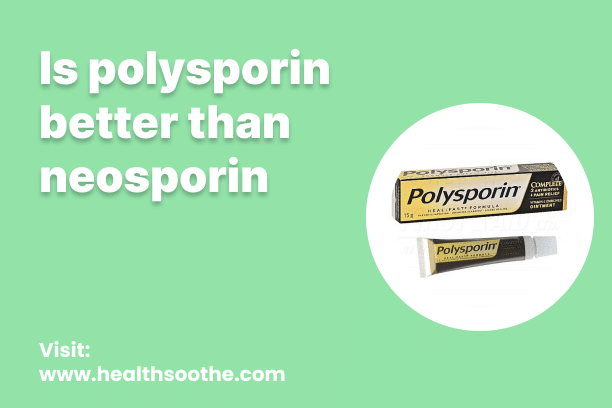Apply the Polysporin ointment to the affected area 1 to 3 times daily as instructed. Follow your doctor's guidance regarding whether to cover the area with a dressing or leave it exposed. Avoid using the ointment in the eyes. Various factors, including body weight, other medical conditions, and concurrent medications, can influence the required dosage. If your doctor prescribes a different dosage from those mentioned here, refrain from altering your medication regimen without consulting your doctor.
How should I use Neosporin?
Neosporin is intended solely for skin application. Adhere to all instructions provided on the product packaging or as directed by your physician. Should you have any inquiries, consult your doctor or pharmacist.
Begin by cleansing and drying the affected skin area. If using the ointment, wash your hands beforehand. Apply a small quantity of the medication (no more than what can fit on your fingertip) in a thin layer onto the skin, gently massaging it in, typically 1 to 3 times daily. Remember to wash your hands after applying the ointment. For the spray, ensure to shake the container well prior to use, then spray a small amount onto the affected area as instructed, generally 1 to 3 times a day. For small treatment areas, sterile bandages may be used.
Avoid excessive application or prolonged use of this medication beyond the directed duration. Overuse will not expedite healing but may elevate the risk of side effects. Refrain from using this product for over 1 week unless otherwise instructed by your doctor. Do not apply this medication to irritated skin in a child's diaper area unless directed by a physician. After application in the diaper area, avoid using tight-fitting diapers or plastic pants.
Take care to prevent contact with the eyes, nose, or mouth. In case of accidental contact, wipe off the medication and rinse thoroughly with water.
Read Also: 5 Routine Health Screenings For Every Woman In Their 40s
Can I Put Neosporin On My Private Area As A Woman?
What is the difference between Polysporin and Neosporin?
The primary contrast between Polysporin and Neosporin lies in the inclusion of an additional ingredient, neomycin, in Neosporin. Neomycin is primarily utilized topically for treating superficial infections, encompassing infections from staphylococci and gram-negative bacilli, either alone or in combination.
Moreover, there exists a discrepancy in the quantities of bacitracin and polymyxin, two common constituents in both ointments. Neosporin comprises 400 units of Bacitracin, whereas Polysporin contains 500 units of the same active ingredient. Furthermore, Polysporin contains 10,000 units of Polymyxin B Sulfate, whereas Neosporin contains only 5,000 units.
Polysporin vs Neosporin: which is better for me?
While Neosporin is often preferred over Polysporin Original due to the presence of neomycin sulfate, which has demonstrated efficacy as a bactericidal agent, particularly for ocular use and against both gram-positive and gram-negative bacteria, including Staphylococcus aureus, it's important to note that Polysporin Complete offers advantages over Neosporin due to its additional ingredients.
Neomycin's effectiveness against Proteus vulgaris surpasses that of polymyxin, and its inclusion in Neosporin is complemented by moisturizing and skin-healing oils found in its formulation.
However, it's noteworthy that Polysporin Complete surpasses Neosporin due to its broader array of ingredients. The comprehensive composition of Polysporin Complete enhances its effectiveness, making it a superior choice in certain cases.
Conclusion
While Neosporin and similar over-the-counter medications can be effective for treating minor skin infections and wounds in certain areas of the body, including the outer regions around the genital area in women, they are not recommended for use in the genital area without medical supervision, especially in men. The delicate balance of the genital microflora and the potential for allergic reactions make it essential to seek professional guidance when addressing issues in this sensitive region.
Understanding the underlying cause of any genital discomfort or skin condition is crucial for proper treatment and management. Consulting a healthcare provider ensures that appropriate measures are taken to promote healing and prevent complications. Remember, maintaining good hygiene and seeking medical advice when needed are key components of genital health and overall well-being.






